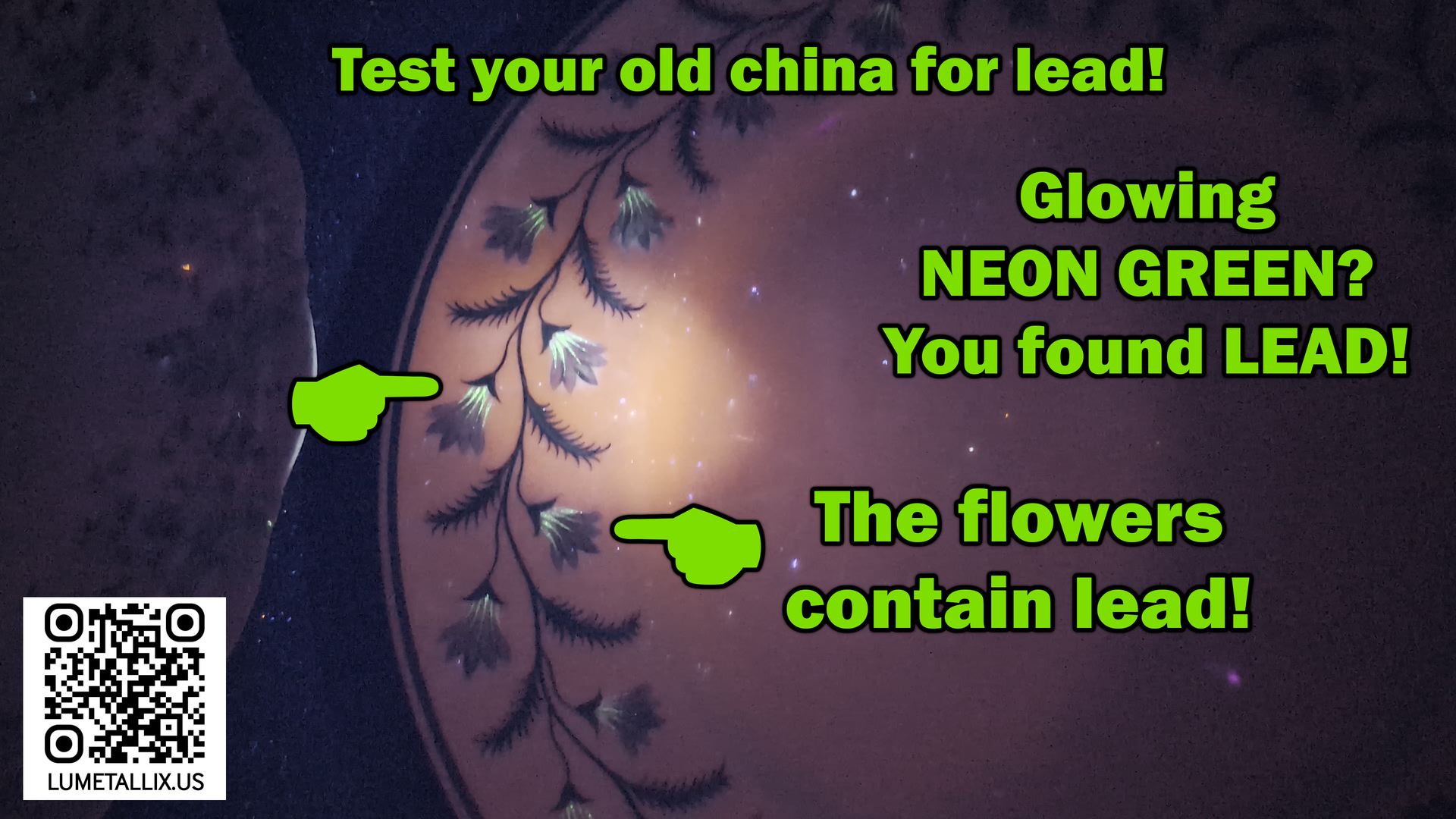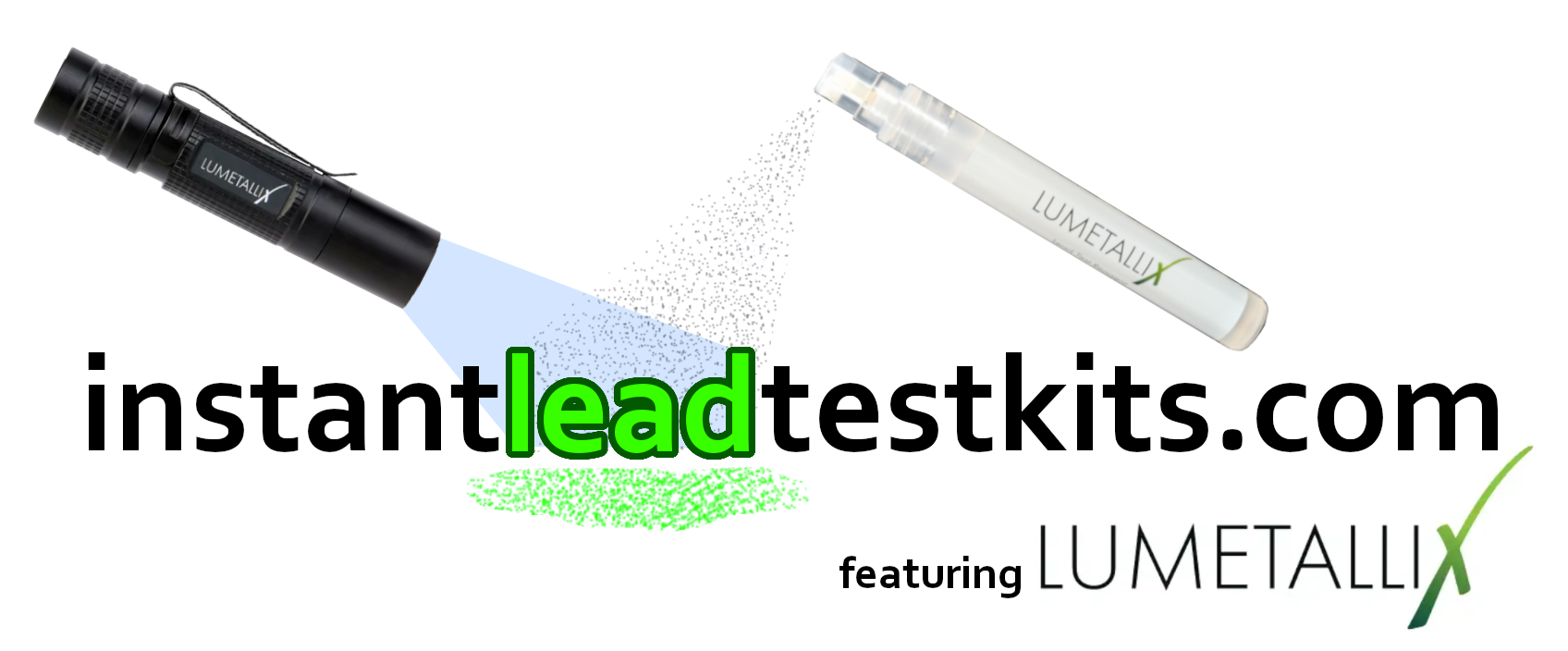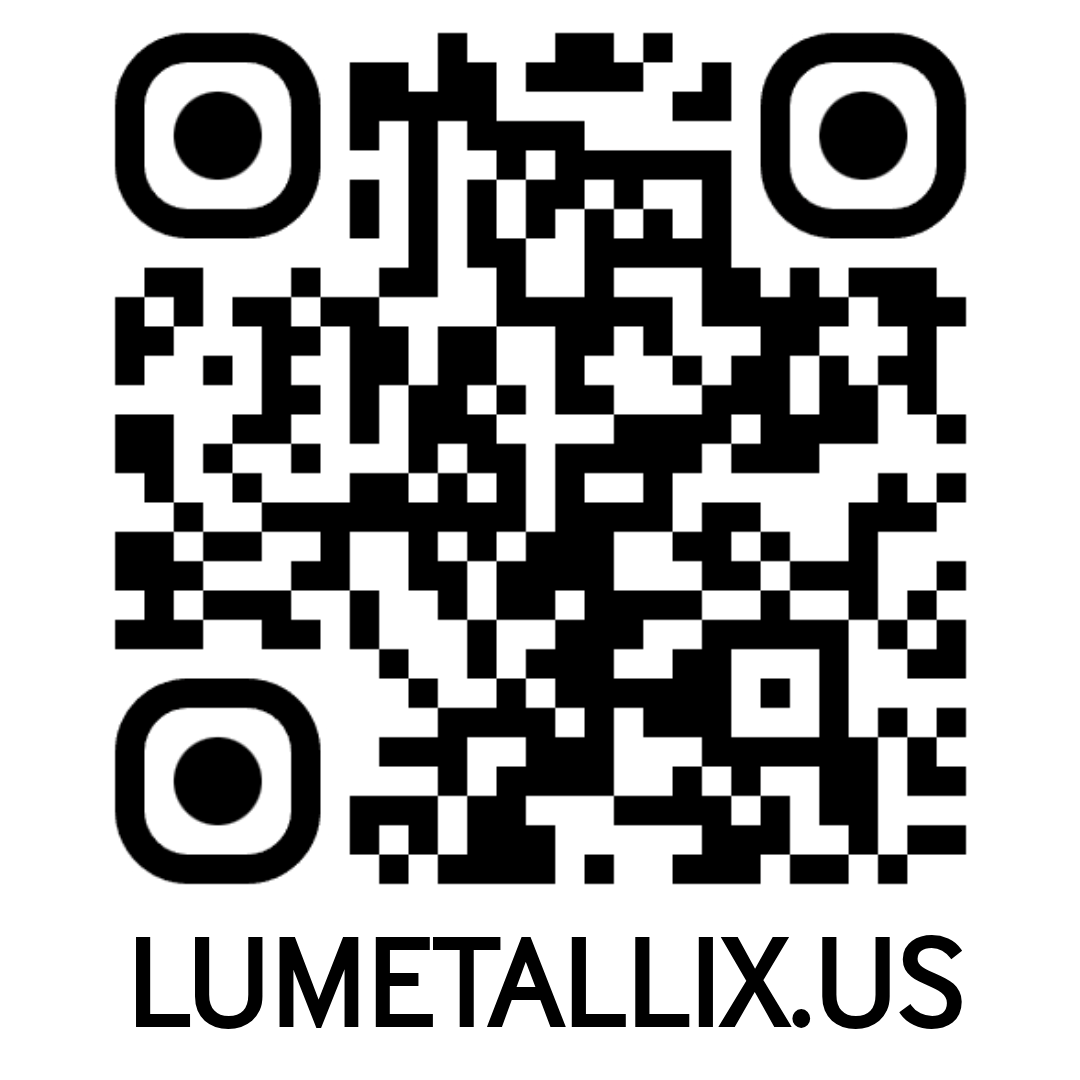
Lead in Tableware
Old China dishes can look amazing, but should you eat off of them?
In the 2019 video below the Lead Paint Detectives looked into how lead got into our dishes in the first place. Lead has long been used in ceramic ware, both in glazes and in decorations. When used in a glaze, lead gives a smooth, glasslike finish that allows bright colors and decorative patterns to show through. It is often associated with rich or intense colors. The 2019 video gives you an idea of how pervasive lead is in our tableware and containers and back then there wasn't a good, instant test to see if tableware contained lead.
Lumetallix Instant Lead Detection Test finds Lead in Mom's old China Plates
With its unique formulation, you can trust the kit that is much more accurate than available alternatives and detects even trace amounts of leachable Lead contamination. Under controlled conditions, the Lumetallix Instant Lead Detection Test can detect 1ng of Lead, 10,000 times more sensitive than coloring swab tests.
Watch how the Lead Paint Detectives and Anthony Weaver test his Mom's old China using Lumetallix.
Anthony Weaver investigates lead in his Mom's old China plates
Lead can be released from the glaze or decoration on the surface of the dish and passed into the food or drink in the dish. This is called "leaching." Then, when you eat the food, the lead gets into your body. The amount of lead that leaches from a dish depends on the amount of lead in the dish, the type of glazing that is used, how the dish is used, what kind of food is put in it, and how long food is left in the dish.
The Food and Drug Administration states:
First, as a bit of background, the FDA established and began enforcing limits on leachable lead in tableware 40 years ago. Obviously, any ware manufactured prior to that era was not subject to FDA limits, because they didn't exist.
The FDA continues: We do not recommend not using old ware unless it shows signs of deterioration such as cracking or pitting of the glaze. This could be a sign that the glaze is disintegrating and could allow lead to leach into food. In addition to using a home test kit, consumers who want to be cautious might choose to avoid storing foods in older holloware (bowls), consuming hot and acidic liquid beverages such as coffee or tea out of cups, and heating bowls, cups, and plates in the microwave. Again, these are qualified recommendations; the ware is not necessarily unsafe because it is old, but it may not comply with current FDA standards.
Common guidelines suggest:
The safest practice is not to use tableware that you are unsure of with food or drink. This is especially true for tableware used by children, pregnant women, or nursing mothers.
Follow these precautions:
- Do not heat food in dishes that contain or might contain lead. Cooking or microwaving speeds the lead-leaching process.
- Do not store foods in dishes that contain or might contain lead. The longer food stays in contact with a dish surface that leaches lead, the more lead will be drawn into the food.
- Do not use dishes that contain or might contain lead with highly acidic foods or drinks. Acidic foods and drinks leach lead out of dishes much faster than non-acid foods. Common acidic foods include foods that contain citrus fruits, apples, tomatoes, soy sauce, and salad dressing. Many drinks are also acidic, such as fruit juices, sodas (especially cola drinks), alcoholic beverages, coffee, and tea. Common non-acidic foods include rice or potatoes; water and milk are non-acidic drinks.
Should I continue to use my dishes?
This is a decision each individual must make. Dishes that contain lead may expose you and your family to small amounts of lead over time. It is recommended that you avoid or reduce lead exposure whenever you can.
How to Use Lumetallix:
1. Shine the Leadlight: Use the included UV LeadLight to shine on the surface you want to test.
2. Spray or Drip the Reagent: While continuing to shine the light, spray or drip the Lumetallix reagent onto the tested area.
3. Watch for the NEON GREEN Glow: If lead is present, the surface will immediately transform, glowing bright green, making lead visible to the naked eye.
Why Lumetallix?
Highly Accurate: Lead is the only substance that will react with our reagent to form the fluorescent crystal structure, making results incredibly accurate.
Instant Results: Lead becomes visible in seconds, providing immediate feedback.
Simple & Safe: Our nontoxic reagent and UV light make lead detection easy and safe for everyone.
Cost Effective: 400+ tests in each kit—enough to test your entire home.

